Download Renesas R0K5562T0S000BE Datasheet
Transcript
APPLICATION NOTE
RX62T Group
Communication with EEPROM
Using the Renesas I2C Bus Module (RIIC)
R01AN0637EJ0100
Rev.1.00
Sep 27, 2011
Introduction
This application note presents a sample program that communicates with an EEPROM (in single master mode) using
the Renesas MCU I2C bus interface module.
Target Device
RX62T Group
Other members of the RX Family that have the same I/O registers (peripheral unit control registers) as the RX62T
Group products can also use the code from this application note. Note, however, that since certain aspects of the
functions used may be changed in other devices due to function additions or other differences, the documentation for
the device used must be checked carefully before using this code. When using this code in an end product or other
application, its operation must be tested and evaluated thoroughly.
Contents
1.
Specifications .................................................................................................................................... 2
2.
Operation Confirmation Environment................................................................................................ 3
3.
Operation........................................................................................................................................... 4
4.
Software ............................................................................................................................................ 6
5.
Reference Documents..................................................................................................................... 28
R01AN0637EJ0100 Rev.1.00
Sep 27, 2011
Page 1 of 29
2
RX62T Group
1.
Communication with EEPROM Using the Renesas I C Bus Module (RIIC)
Specifications
This sample program communicates with the EEPROM to write 8 bytes of data and then read the written data back.
Between the write and read operations, it uses acknowledge polling to verify that the EEPROM write has completed.
1.1
Connection Diagram
Figure 1 shows the connections in the application example presented in this application note.
RSK
R0K5562T0S000BE
5.0 V
5.0 V
RX62T
(R5F562TAADFP)
SCL
PB2/SDA
SDA
4.7 k
A0
A1
WP
4.7 k
PB1/SCL
4.7 k
2.7 k
2.7 k
EEPROM
(R1EX24512ASAS0A)
Slave address: A6h
(Bit 0 is the R/W bit)
12.5 MHz
Figure 1 Connection Diagram
1.2
RIIC Settings
Table 1 lists the RIIC settings described in this application note.
Table 1
RIIC Settings
Item
Operating frequencies
Master/slave
Address format
Transfer speed
Timeout detection
Settings
• Input clock (EXTAL): 12.5 MHz
• System clock (ICLK): 100 MHz
• Peripheral module clock (PCLK): 50 MHz
• Internal reference clock (IICφ): 12.5 MHz
Single master
7-bit address format
400 Kbps
• The detection function counts while the SCL line is low.
• Long mode (16-bit counter (IICφ): about 5.24288 ms)
R01AN0637EJ0100 Rev.1.00
Sep 27, 2011
Page 2 of 29
2
RX62T Group
1.3
Communication with EEPROM Using the Renesas I C Bus Module (RIIC)
EEPROM
Table 2 lists the specifications of the EEPROM used in the application example described in this application note.
Table 2
EEROM Specifications
Item
Catalog number
Capacity
Slave address
Write protection
2.
Description
R1EX24512ASAS0A
512 K (64-kword × 8-bit)
Slave address: A6h
Bit 0 is the R/W bit. Bits 1 and 2 depend on the A0 and A1 pins, respectively.
• Pin A0: High
• Pin A1: High
Always released.
• WP pin: Low
Operation Confirmation Environment
Table 3 lists the environment used for confirming the operation of this application example.
Table 3
Operation Confirmation Environment
Item
Device
Board
Power supply voltage
Input clock
Operating temperature
HEW
Toolchain
Debugger/Emulator
Debugger component
Description
RX62T (R5F562TAADFP)
Renesas Starter Kit (R0K5562T0S000BE)
5.0 V (Supplied from E1)
12.5 MHz (ICLK = 100 MHz, PCLK = 50 MHz)
Room temperature
Version 4.09.00.007
RX Standard Toolchain V.1.0.2.0)
E1 emulator
RX E1/E20 SYSTEM V.1.01.00
R01AN0637EJ0100 Rev.1.00
Sep 27, 2011
Page 3 of 29
2
RX62T Group
3.
Communication with EEPROM Using the Renesas I C Bus Module (RIIC)
Operation
3.1
Writing to the EEPROM
This sample program uses master transmission for writing to an external EEPROM device. The RIIC module issues a
start condition (S) and then sends the EEPROM’s slave address. Since the eighth bit at this time is the R/W bit, a 0 must
be sent at write time (master transmission). After that, the memory address is sent as two 8-bit bytes, and then the data
to be written is sent to the EEPROM in order. The 2-byte memory address transmitted at this time indicates the address
for the write operation in EEPROM. After the transmission of all the data has completed, the RIIC module issues a stop
condition (P) and releases the bus. Note that the write address in memory used in this application note is 0000h.
Figure 2 shows an example of the signals used when writing the EEPROM.
Figure 2 Signals when Writing to EEPROM
3.2
Reading from EEPROM
A compound format consisting of master transmission and master reception is used for reading data from EEPROM.
First, the RIIC module issues a start condition (S) and then it transmits the EEPROM slave address and then a two byte
(2 × 8 bits) memory address. At this time, the RIIC module sends 0 as the R/W bit in the EEPROM slave address
transmission (master transmission). After that, it issues a restart condition (Sr) and sends the EEPROM slave address
again. At this time, it transmits 1 as the R/W bit in the transmission to the EEPROM (master reception). After the
EEPROM slave address has been sent, the data is read out from the EEPROM by the generation of the next clock cycle.
During the read operation, the RIIC module transmits an ACK each time it receives a single byte. For the last data,
however, it returns a NACK. After that, it generates a stop condition (P). Note that the memory address read by this
sample program is 0000h.
Figure 3 shows an example of the signals used when reading the EEPROM.
S 1 2 3 4 5 6 7 8
A
C
K
1 2 3 4 5 6 7 8
A
C
K
1 2 3 4 5 6 7 8
A
C
K
A
C
K
1st Memory
address
A
C
K
2nd Memory
address
A
C
K
Sr
1 2 3 4 5 6 7 8
A
C
K
Re
Start
Slave address
(A7h)
A
C
K
1 2 3 4 5 6 7 8
A
C
K
P
SCL
SDA
Start
Slave address
(A6h)
Master transmission
Read Data (n)
N
A
C
K
Stop
Master Reception
Figure 3 Signals when Reading from EEPROM
R01AN0637EJ0100 Rev.1.00
Sep 27, 2011
Page 4 of 29
2
RX62T Group
3.3
Communication with EEPROM Using the Renesas I C Bus Module (RIIC)
Acknowledge Polling
Acknowledge polling is used as the method for determining whether or not the EEPROM is in the write in progress
state. To perform acknowledge polling, the sample program issues a start condition and then sends the EEPROM slave
address and then a stop condition. At this time, if the EEPROM is writing, it will return a 1 on the ACK clock (NACK).
Inversely, if the write has completed, it will return 0 (ACK). This allows the sample program to determine whether or
not a write is in progress.
Figure 4 shows the acknowledge polling signals.
Figure 4 Acknowledge Polling Signals
R01AN0637EJ0100 Rev.1.00
Sep 27, 2011
Page 5 of 29
2
RX62T Group
4.
Communication with EEPROM Using the Renesas I C Bus Module (RIIC)
Software
4.1
Functions
Tables 4 and 5 list the functions in this sample program. The functions that are not in bold are static functions.
Table 4
Functions in File main.c
Function Name
main
SampleEepromWrite
SampleEepromRead
IICAckPolling
CpuCreate
CpuIntCreate
IICPortCreate
Table 5
Notes
Figure 7
Figure 11
Figure 12
Figure 13
Figure 8
Figure 9
Figure 10
Functions in File iic.c
Function Name
IIC_Create
IIC_Destroy
IIC_EepWrite
IIC_RandomRead
IIC_GetStatus
IIC_EEI_Int
IIC_EEI_IntTimeOut
IIC_EEI_IntAL
IIC_EEI_IntSP
IIC_EEI_IntST
IIC_EEI_IntNack
IIC_RXI_Int
IIC_RXI_IntEepRead
IIC_TXI_Int
IIC_TXI_IntEepWrite
IIC_TXI_IntEepRead
IIC_TEI_Int
IIC_TEI_IntEepWrite
IIC_TEI_IntEepRead
IIC_GenClkSP
IIC_Error
Operation
Main processing
EEPROM write processing example
EEPROM read processing example
Acknowledge polling
CPU initialization
CPU interrupt setting
IIC port settings
Operation
IIC initialization
IIC termination processing
EEPROM write start processing
EEPROM read start processing
IIC status check
Communication error or event interrupt
Timeout detection interrupt
Called from within IIC_EEI_Int()
Arbitration lost detected interrupt
Called from within IIC_EEI_Int()
Stop condition detected interrupt
Called from within IIC_EEI_Int()
Start condition detected interrupt
Called from within IIC_EEI_Int()
NACK detected interrupt
Called from within IIC_EEI_Int()
Receive data full interrupt
EEPROM read processing (master reception section)
Called from within IIC_RXI_Int()
Transmit data empty interrupt
EEPROM write processing
Called from within IIC_TXI_Int()
EEPROM read processing (master transmission section)
Called from within IIC_TXI_Int()
Transmission complete interrupt
Transmission end processing used after an EEPROM write
Called from within IIC_TEI_Int()
Transmission end processing used after an EEPROM read
Called from within IIC_TEI_Int()
Stop condition generation used when an error occurs
Called from within IIC_EEI_IntTimeOut() and IIC_EEI_IntAL()
Error handling
R01AN0637EJ0100 Rev.1.00
Sep 27, 2011
Notes
Figure 14
Figure 15
Figure 16
Figure 17
Figure 18
Figure 19
Figure 20
Figure 21
Figure 22
Figure 23
Figure 24
Figure 25
Figure 26
Figure 27
Figure 28
Figure 29
Figure 30
Figure 31
Figure 32
Figure 33
Figure 34
Page 6 of 29
2
RX62T Group
4.2
Communication with EEPROM Using the Renesas I C Bus Module (RIIC)
Variables
4.2.1
Structures
Figure 5 shows the structure used as the argument to the functions IIC_EepWrite() and IIC_RandomRead(). Also, table
6 lists the members of this structure.
struct str_IIC_API_T
{
uint8_t
SlvAdr;
uint16_t
PreCnt;
uint8_t
*pPreData;
uint32_t
RWCnt;
uint8_t
*pRWData;
};
typedef struct str_IIC_API_T
/* Slave Address, Don’t set bit0. It’s a Read/Write bit */
/* Number of Predata */
/* Pointer for PreData (Memory Addr of EEPROM) */
/* Number of Data */
/* Pointer for Data buffer */
IIC_API_T;
Figure 5 Structure Uses as an Argument to IIC_EepWrite() and IIC_RandomRead()
Table 6
Members of the Structure IIC_API_T
Structure Member
SlvAdr
Range of Values
00h to FEh
PreCnt
00h to FFh
*pPreData
⎯
RWCnt
0000 0000h to
FFFF FFFFh
*pRWData
⎯
R01AN0637EJ0100 Rev.1.00
Sep 27, 2011
Description
Slave address
Since the low-order bit is the R/W bit, it should always be
set to 0.
Memory address counter
This is always set to 2 in this sample program.
Memory address storage buffer pointer
On write: The address in EEPROM to write data to (write
destination)
On read: The address in EEPROM to read data from (read
source)
Data counter
On write: Number of data items to write to EEPROM
On read: Number of data items to read from EEPROM
Data storage buffer pointer
On write: Storage source for data to write to EEPROM.
On read: Storage destination for data read from EEPROM.
Page 7 of 29
2
RX62T Group
4.2.2
Communication with EEPROM Using the Renesas I C Bus Module (RIIC)
Functions
Tables 7 and 8 list the functions in this sample program.
Table 7
Functions in the File main.c
Function
uint8_t trm_buff[256]
uint8_t rcv_buff[256]
uint8_t trm_eeprom_adr[2]
uint8_t rcv_eeprom_adr[2]
IIC_API_T iic_buff_prm[2]
Table 8
Description
Transmit data buffer
Receive data buffer
EEPROM slave address storage buffer (for write)
EEPROM slave address storage buffer (for read)
Structure used as the argument to the functions IIC_EepWrite() and
IIC_RandomRead()
Functions in the File iic.c
Function
static IIC_API_T iic_buff
static int8_t iic_mode
static int8_t iic_status
static uint32_t iic_trm_cnt
static uint32_t iic_rcv_cnt
R01AN0637EJ0100 Rev.1.00
Sep 27, 2011
Description
Structure used as the argument to the functions IIC_EepWrite() and
IIC_RandomRead()
(Used by both IIC_EepWrite() and IIC_RandomRead())
Internal mode
IIC status
Internal IIC transmit counter
Internal IIC receive counter
Page 8 of 29
2
RX62T Group
4.2.3
Communication with EEPROM Using the Renesas I C Bus Module (RIIC)
Enumerations
The IIC status, the IIC bus status, the internal mode, and the return value from the functions IIC_EepWrite() and
IIC_RandomRead() are all declared as enumerations. The IIC status values are listed in table 9 and their state transition
diagram are shown in figure 6. Also, table 10 lists the IIC bus status values, table 11 lists the internal modes, and table
12 lists the return values of the functions IIC_EepWrite() and IIC_RandomRead().
The IIC status is stored at the address given by its first argument when the function IIC_GetStatus() is called. The
internal mode is only used in the IIC-related functions in this sample program.
Table 9
IIC Status Values (enum RiicStatus_t)
Defined Name
RIIC_STATUS_IDLE
RIIC_STATUS_ON_COMMUNICATION
RIIC_STATUS_NACK
RIIC_STATUS_FAILED
Description
The idle state
The status transitions to this state after initialization in the
function IIC_Create(). The status also transitions to this state
after either an EEPROM write or an EEPROM read completes
normally (after a stop condition is detected).
Communication in progress
The status transitions to this state when communication is
initiated by either IIC_EepWrite() or IIC_RandomRead().
NACK received
The status transitions to this state when a NACK is received.
Communication failure
The status transitions to this state when a stop condition is
detected before either an EEPROM write or an EEPROM read
completes.
In this sample program, since a stop condition is generated on
either a timeout or an arbitration lost, the status will transition to
this state on either of those events as well.
Figure 6 IIC Status State Transition Diagram
R01AN0637EJ0100 Rev.1.00
Sep 27, 2011
Page 9 of 29
RX62T Group
2
Communication with EEPROM Using the Renesas I C Bus Module (RIIC)
Table 10 IIC Bus Status (enum RiicBusStatus_t)
Defined Name
RIIC_BUS_STATUS_FREE
RIIC_BUS_STATUS_BBSY
Description
IIC bus free
IIC bus busy
Table 11 Internal Modes (enum RiicInternalMode_t)
Defined Name
IIC_MODE_IDLE
IIC_MODE_EEP_READ
IIC_MODE_EEP_WRITE
Description
Idle mode
The internal mode transitions to idle mode on initialization by
IIC_Create() or when a stop condition is detected.
EEPROM read mode
The internal mode transitions to this mode at the start of
communication due to IIC_RandomRead().
EEPROM write mode
The internal mode transitions to this mode at the start of
communication due to IIC_EepWrite().
Table 12 IIC_EepWrite() and IIC_RandomRead() Return Value (enum RiicEepFnc_t)
Defined Name
RIIC_OK
Description
This value is returned when communication starts up normally.
RIIC_BUS_BUSY
RIIC_MODE_ERROR
This value is returned when the I C bus is busy.
This value is returned when the RIIC module has a
communication operation in progress.
This value is returned when an illegal argument value is
passed.
(Only the function IIC_RandomRead() uses this value.)
RIIC_PRM_ERROR
R01AN0637EJ0100 Rev.1.00
Sep 27, 2011
2
Page 10 of 29
RX62T Group
4.3
2
Communication with EEPROM Using the Renesas I C Bus Module (RIIC)
Function Specifications
This section presents the specifications of the sample code functions that control the RIIC module.
IIC_Create
Overview
Header
Declaration
Description
Arguments
Return value
Notes
IIC_Destroy
Overview
Header
Declaration
Description
Arguments
Return value
Notes
IIC_EepWrite
Overview
Header
Declaration
Description
Arguments
Return value
Notes
Initializes the RIIC module.
r_apn_iic.h
void IIC_Create(void)
Performs the following settings.
• Transfer speed setting: 400 kbps
• Interrupt settings
• Timeout settings
None
None
Stops the RIIC module.
r_apn_iic.h
void IIC_Destroy(void)
Stops the RIIC module and clears all the RIIC module related registers.
None
None
If this function is called during a communication operation, it forcibly stops the RIIC
module.
Starts a write to the EEPROM.
r_apn_iic.h
int8_t IIC_EepWrite(IIC_API_T)
2
Uses master transmission to write to the EEPROM. If the I C bus is busy or if the RIIC
module is in the communication in progress state, it does not start master transmission.
IIC_API_T data1
If communication starts up normally: RIIC_OK
2
If the I C bus is busy: RIIC_BUS_BUSY
If the RIIC module is communicating: RIIC_MODE_ERROR
See section 4.2.1, Structures, for details on the argument IIC_API_T data1.
See section 4.2.3, Enumerations, for details on the return value.
Bit 0 in the slave address (SlvAdr), which is a member of the argument structure, must be
set to 0.
R01AN0637EJ0100 Rev.1.00
Sep 27, 2011
Page 11 of 29
RX62T Group
2
Communication with EEPROM Using the Renesas I C Bus Module (RIIC)
IIC_RandomRead
Overview
Starts a read from the EEPROM.
Header
r_apn_iic.h
Declaration
int8_t IIC_RandomRead(IIC_API_T);
Description
This function reads data from the EEPROM using both master transmission and master
2
reception. If the I C bus is busy or the RIIC is already communicating, it does not start a
master transmission.
Arguments
IIC_API_T data1
Return value
If communication starts up normally: RIIC_OK
2
If the I C bus is busy: RIIC_BUS_BUSY
If the RIIC module is communicating: RIIC_MODE_ERROR
If the argument value is illegal: RIIC_PRM_ERROR
Notes
See section 4.2.1, Structures, for details on the argument IIC_API_T data1.
See section 4.2.3, Enumerations, for details on the return value.
The argument is recognized as illegal if both the memory address counter and the data
counter are 0.
Bit 0 in the slave address (SlvAdr), which is a member of the argument structure, must be
set to 0.
IIC_GetStatus
Overview
Header
Declaration
Description
Arguments
Return value
Notes
Acquires the status of the RIIC module.
r_apn_iic.h
void IIC_GetStatus(enum RiicStatus_t*, enum RiicBusStatus_t*);
This function stores the IIC status in the area indicated by the first argument. It also stores
the IIC bus state in the area indicated by the second argument.
enum RiicStatus_t *data1
enum RiicBusStatus_t *data2
None
See section 4.2.3, Enumerations, for details on the arguments.
R01AN0637EJ0100 Rev.1.00
Sep 27, 2011
Page 12 of 29
2
RX62T Group
4.4
Communication with EEPROM Using the Renesas I C Bus Module (RIIC)
Flowchart
This section presents the flowcharts for the functions in this sample program.
main
CpuCreate
CPU initialization
IIC_Create
IIC initialization
SampleEepromWrite
IICAckPolling
Acknowledge polling
SampleEepromRead
IIC_Destroy
Example of EEPROM write processing
Example of EEPROM read processing
IIC termination processing
Figure 7 Main Processing
CpuCreate
Clock settings
ICLK = 100 MHz, PCLK = 50 MHz (EXTAL = 12.5 MHz)
CpuIntCreate
CPU interrupt settings
IICPortCreate
IIC port settings
Clear the module stop bit
Clears the module stop bit.
End
Figure 8 CPU Initialization
Figure 9 CPU Interrupt Settings
R01AN0637EJ0100 Rev.1.00
Sep 27, 2011
Page 13 of 29
2
RX62T Group
Communication with EEPROM Using the Renesas I C Bus Module (RIIC)
Figure 10 IIC Port Settings
SampleEepromWrite
Transmit data settings
Sets up the sample transmit data (0x00, 0x01, 0x02, ...).
Sets the EEPROM write address (0x0000).
Set up the IIC_EepWrite()
argument buffer
IIC_EepWrite
Sets up the argument data for IIC_EepWrite().
(EEPROM slave address, memory address length, memory address
storage buffer pointer, transmit data count, and transmit data storage buffer
pointer)
Starts the write to EEPROM.
IIC_GetStatus
Waits for the completion of data transmission to
EEPROM.
No
Yes
IIC_GetStatus
Waits for the IIC bus free state.
No
IIC bus free?
Yes
End
Figure 11 Sample EEPROM Write Processing
R01AN0637EJ0100 Rev.1.00
Sep 27, 2011
Page 14 of 29
2
RX62T Group
Communication with EEPROM Using the Renesas I C Bus Module (RIIC)
SampleEepromRead
Clear the receive data buffer
Clears the receive data buffer.
Set the EEPROM memory address
Sets the address data for reading from EEPROM (0x0000)
Set up the IIC_RandomRead()
argument buffer
Sets up the argument data for IIC_RandomRead().
(EEPROM slave address, memory address length, memory address
storage buffer pointer, receive data count, and receive data storage buffer
pointer)
IIC_RandomRead
Starts the read from EEPROM.
IIC_GetStatus
Waits for the completion of data reception from EEPROM.
No
Yes
IIC_GetStatus
Waits for the IIC bus free state.
No
IIC bus free?
Yes
End
Figure 12 Sample EEPROM Read Processing
R01AN0637EJ0100 Rev.1.00
Sep 27, 2011
Page 15 of 29
2
RX62T Group
Communication with EEPROM Using the Renesas I C Bus Module (RIIC)
IICAckPolling
Sets the EEPROM write address (0x0000).
Set the EEPROM memory address
Set up the IIC_EepWrite()
argument buffer
Sets up the argument data for IIC_EepWrite().
(EEPROM slave address)
IIC_EepWrite
Starts acknowledge polling.
IIC_GetStatus
Waits for IIC communication to complete.
No
Yes
NACK response?
Yes
Wait for the interval required for
the next acknowledge polling
operation
No
ACK response?
No
Yes
Iterates acknowledge polling either until an ACK
response is received or until the specified iteration
count completes.
During each iteration, the function waits for the
interval specified in the argument.
No
Yes
End
Figure 13 Acknowledge Polling
R01AN0637EJ0100 Rev.1.00
Sep 27, 2011
Page 16 of 29
2
RX62T Group
Communication with EEPROM Using the Renesas I C Bus Module (RIIC)
IIC_Create
Reset all RIIC registers and its internal state by
setting ICCR1.ICE to 0 and ICCR1.IICRST to 1.
RIIC reset
Transfer speed setting
Sets the transfer speed to 400 kbps.
Sets up timeout operation.
(Only count when SCL is high and use long mode.)
Timeout setting
Invalidate slave address
Disables slave address detection.
Clear ACKBT protection
Enables writing to ACKBT.
(To enable NACK responses from EEPROM during read
processing.)
Interrupt settings
• Enable the timeout interrupt
• Enable the arbitration lost interrupt
• Disable the start condition detection interrupt
• Enable the stop condition detection interrupt
• Enable the NACK received interrupt
• Enable the receive data full interrupt
• Disable the transmission complete interrupt
• Enable the transmitted empty interrupt
Interrupt settings
Initializes the RIIC internal RAM.
Enable IIC transfer operations
Enables RIIC transfer operations.
End
Figure 14 IIC Initialization
Figure 15 IIC Termination Processing
R01AN0637EJ0100 Rev.1.00
Sep 27, 2011
Page 17 of 29
RX62T Group
2
Communication with EEPROM Using the Renesas I C Bus Module (RIIC)
Figure 16 EEPROM Write Start Processing
Figure 17 EEPROM Read Start Processing
R01AN0637EJ0100 Rev.1.00
Sep 27, 2011
Page 18 of 29
2
RX62T Group
Communication with EEPROM Using the Renesas I C Bus Module (RIIC)
Figure 18 IIC State Verification Processing
IIC_EEI_Int
Timeout interrupt handling?
No
Enables the timeout detection interrupt and
furthermore, if a timeout detection interrupt has
occurred, handles the timeout detection interrupt.
Yes
IIC_EEI_IntTimeOut
Arbitration lost interrupt
handling?
No
Enables the arbitration lost interrupt and
furthermore, if an arbitration lost interrupt has
occurred, handles the arbitration lost interrupt.
Yes
IIC_EEI_IntAL
Stop condition detected
interrupt handling?
No
Enables the stop condition detection interrupt and
furthermore, if a stop condition detection interrupt
has occurred, handles the stop condition detection
interrupt.
Yes
IIC_EEI_IntSP
NACK detected interrupt
handling?
No
Enables the NACK detection interrupt and
furthermore, if a NACK detection interrupt has
occurred, handles the NACK detection interrupt.
Yes
IIC_EEI_IntNack
Start condition detected
interrupt handling?
Yes
No
Enables the start condition detection interrupt and
furthermore, if a start condition detection interrupt
has occurred, handles the start condition detection
interrupt.
IIC_EEI_IntST
End
Figure 19 Communication Error and Event Interrupts
R01AN0637EJ0100 Rev.1.00
Sep 27, 2011
Page 19 of 29
2
RX62T Group
Communication with EEPROM Using the Renesas I C Bus Module (RIIC)
Figure 20 Timeout Detection Interrupt
Figure 21 Arbitration Lost Detection Interrupt
R01AN0637EJ0100 Rev.1.00
Sep 27, 2011
Page 20 of 29
2
RX62T Group
Communication with EEPROM Using the Renesas I C Bus Module (RIIC)
IIC_EEI_IntSP
Clear ICSR2.NACKF
Clear NACKF here when NACK detected.
Clear ICSR2.STOP
Clear the STOP flag.
Interrupt settings
• Enable the timeout interrupt
• Enable the arbitration lost interrupt
• Disable the start condition detection interrupt
• Enable the stop condition detection interrupt
• Enable the NACK received interrupt
• Enable the receive data full interrupt
• Disable the transmission complete interrupt
• Enable the transmitted empty interrupt
Interrupt settings
What is
the internal mode?
EEPROM write processing
Is the unsent
data empty?
EEPROM read processing
No
Is the not received
data empty?
Yes
Is the IIC
status other than
NACK received?
Idle state
Other state
No
IIC_Error
Yes
No
Set the IIC status to
communication failure
Set the IIC status to
communication failure
Yes
Set the IIC status to
idle state
Set the IIC status to
idle state
Set the internal mode to idle
Clear the internal counter
End
Figure 22 Stop Condition Detection Interrupt
Figure 23 Start Condition Detected Interrupt
R01AN0637EJ0100 Rev.1.00
Sep 27, 2011
Page 21 of 29
2
RX62T Group
Communication with EEPROM Using the Renesas I C Bus Module (RIIC)
IIC_EEI_IntNack
Set the internal status to NACK
received
Set the internal status to NACK received.
Disable the NACK detection interrupt
Disable the NACK detection interrupt.
Clear ICSR2.STOP
Clears the stop condition detected flag.
Transmit the EEPROM device address
Generates a stop condition.
End
Figure 24 NACK Detection Interrupt
IIC_RXI_Int
What is
the internal mode?
EEPROM read processing
EEPROM write processing
Other state
IIC_RXI_IntEepRead
IIC_Error
IIC_Error
End
Figure 25 Receive Data Full Interrupt
R01AN0637EJ0100 Rev.1.00
Sep 27, 2011
Page 22 of 29
2
RX62T Group
Communication with EEPROM Using the Renesas I C Bus Module (RIIC)
IIC_RXI_IntEepRead
Interrupt after slave
address reception?
No
Yes
Is remaining data to read
count 3 or less?
Is remaining data to read
count 2 or less?
No
No
Yes
Set SCL to be held low after
the 9th clock generated
Yes
Set SCL to be held low
after the 9th clock
generated
Is remaining data to read
count 2 or less?
Is remaining data to read
count 1 or less?
No
No
Yes
Set up NACK transmission
when the next data is received
Yes
Set up NACK transmission
when the next data is
received
Dummy ICDRR read
Is remaining data to read
count 1 or less?
No
Yes
Clear ICSR2.STOP
Read out the receive data
Prepare to generate a stop
condition
Decrement read counter
Read the last receive data
(and generate a stop
condition)
Decrement read counter
Clear SCL to be held low after
the 9th clock generated
Increment internal counter
End
Figure 26 EEPROM Read Processing (Master Reception Section)
R01AN0637EJ0100 Rev.1.00
Sep 27, 2011
Page 23 of 29
2
RX62T Group
Communication with EEPROM Using the Renesas I C Bus Module (RIIC)
IIC_TXI_Int
What is
the internal mode?
EEPROM write processing
EEPROM read processing
Other state
IIC_TXI_IntEepWrite
IIC_TXI_IntEepRead
IIC_Error
End
Figure 27 Transmit Data Empty Interrupt
Figure 28 EEPROM Write Processing
IIC_TXI_IntEepRead
This counter counts the number of
transmitted data items.
Slave address
transmission?
Yes
Transmit the slave
address
No
Memory address
transmission?
No
Yes
Transmit the memory
address
Enable the transmission
complete interrupt
End
Figure 29 EEPROM Read Processing (Master Transmission Section)
R01AN0637EJ0100 Rev.1.00
Sep 27, 2011
Page 24 of 29
2
RX62T Group
Communication with EEPROM Using the Renesas I C Bus Module (RIIC)
IIC_TEI_Int
What is
the internal mode?
EEPROM write processing
EEPROM read processing
Other state
IIC_TEI_IntEepWrite
IIC_TEI_IntEepRead
IIC_Error
End
Figure 30 Transmission Complete Interrupt
Figure 31 Transmission Complete Processing after EEPROM Write Processing
IIC_TEI_IntEepRead
Clear ICSR2.START
Clear ICSR2.START
Enable start condition detection
interrupt
Enable start condition
detection interrupt
Disable the transmission
complete interrupt
Generate a restart condition
Disable the transmission
complete interrupt
Generate a restart condition
End
Figure 32 Transmission Complete Processing after EEPROM Read Processing
R01AN0637EJ0100 Rev.1.00
Sep 27, 2011
Page 25 of 29
2
RX62T Group
Communication with EEPROM Using the Renesas I C Bus Module (RIIC)
IIC_GenClkSP
Stops output to SCL and SDA and resets the
internal state.
Internal reset
Set up timeout operation
Generates timeouts on SCL = high or SCL = low.
Waits for the SCL and SDA release times due
to the internal reset.
Wait for a fixed period
Enable timeouts
SCL = High?
Enables timeouts.
No
Even though an internal reset was performed, SCL was set
high while another device was holding it low.
Yes
IIC_Error
Clears MST/TRS protection and sets up master
transmission mode.
Set up master mode
No
SDA = Low?
Yes
Loop
Cnt = 0; cnt < 10; cnt++
SDA = Low?
No
Yes
Processing when the remote device is holding SDA low.
Generate 1 clock cycle
Has the one clock cycle
completed?
Yes
One possibility is that a bit displacement occurred between
the RIIC module and the remote device.
In that case, it may be possible to release SCL by
generating a few clock cycles.
No
Did a timeout occur?
No
Use the ICCR1.CLO bit and generate one clock cycle at a
time. Each time, check whether SDA is high or nine
iterations have been performed.
Yes
Have 9 clock
cycles been generated and
is SDA low?
IIC_Error
No
Loop
Is the bus busy?
No
Yes
IIC internal reset
Generate a stop condition
Enable MST/TRS protection
Set up timeout operation
If the bus is busy, generates a stop condition.
In all other cases, performs an internal reset and switches
from master transmission mode to slave reception mode (idle
mode).
Enables MST/TRS protection.
Generates timeouts when SCL is high.
End
Figure 33 Stop Condition Generation Processing when an Abnormal State Occurs
R01AN0637EJ0100 Rev.1.00
Sep 27, 2011
Page 26 of 29
RX62T Group
2
Communication with EEPROM Using the Renesas I C Bus Module (RIIC)
IIC_Error
Figure 34 Error Handling
R01AN0637EJ0100 Rev.1.00
Sep 27, 2011
Page 27 of 29
RX62T Group
5.
2
Communication with EEPROM Using the Renesas I C Bus Module (RIIC)
Reference Documents
• Hardware Manual
RX62T Group User’s Manual: Hardware Rev.1.10
(The latest version can be downloaded from the Renesas Electronics Web site.)
• Software Manual
RX Family User’s Manual: Software Rev.1.00
(The latest version can be downloaded from the Renesas Electronics Web site.)
• Development Environment Manual Rev.1.01
RX Family C/C++ Compiler Package User’s Manual
(The latest version can be downloaded from the Renesas Electronics Web site.)
• Technical Updates
(The latest information can be downloaded from the Renesas Electronics Web site.)
R01AN0637EJ0100 Rev.1.00
Sep 27, 2011
Page 28 of 29
RX62T Group
2
Communication with EEPROM Using the Renesas I C Bus Module (RIIC)
Website and Support
Renesas Electronics Website
http://www.renesas.com/
Inquiries
http://www.renesas.com/inquiry
All trademarks and registered trademarks are the property of their respective owners.
R01AN0637EJ0100 Rev.1.00
Sep 27, 2011
Page 29 of 29
Revision Record
Rev.
1.00
Date
Sep.27.11
Description
Page
Summary
—
First edition issued
A-1
General Precautions in the Handling of MPU/MCU Products
The following usage notes are applicable to all MPU/MCU products from Renesas. For detailed usage notes on the
products covered by this manual, refer to the relevant sections of the manual. If the descriptions under General
Precautions in the Handling of MPU/MCU Products and in the body of the manual differ from each other, the
description in the body of the manual takes precedence.
1. Handling of Unused Pins
Handle unused pins in accord with the directions given under Handling of Unused Pins in the manual.
⎯ The input pins of CMOS products are generally in the high-impedance state. In operation with an
unused pin in the open-circuit state, extra electromagnetic noise is induced in the vicinity of LSI, an
associated shoot-through current flows internally, and malfunctions occur due to the false
recognition of the pin state as an input signal become possible. Unused pins should be handled as
described under Handling of Unused Pins in the manual.
2. Processing at Power-on
The state of the product is undefined at the moment when power is supplied.
⎯ The states of internal circuits in the LSI are indeterminate and the states of register settings and
pins are undefined at the moment when power is supplied.
In a finished product where the reset signal is applied to the external reset pin, the states of pins
are not guaranteed from the moment when power is supplied until the reset process is completed.
In a similar way, the states of pins in a product that is reset by an on-chip power-on reset function
are not guaranteed from the moment when power is supplied until the power reaches the level at
which resetting has been specified.
3. Prohibition of Access to Reserved Addresses
Access to reserved addresses is prohibited.
⎯ The reserved addresses are provided for the possible future expansion of functions. Do not access
these addresses; the correct operation of LSI is not guaranteed if they are accessed.
4. Clock Signals
After applying a reset, only release the reset line after the operating clock signal has become stable.
When switching the clock signal during program execution, wait until the target clock signal has
stabilized.
⎯ When the clock signal is generated with an external resonator (or from an external oscillator)
during a reset, ensure that the reset line is only released after full stabilization of the clock signal.
Moreover, when switching to a clock signal produced with an external resonator (or by an external
oscillator) while program execution is in progress, wait until the target clock signal is stable.
5. Differences between Products
Before changing from one product to another, i.e. to one with a different type number, confirm that the
change will not lead to problems.
⎯ The characteristics of MPU/MCU in the same group but having different type numbers may differ
because of the differences in internal memory capacity and layout pattern. When changing to
products of different type numbers, implement a system-evaluation test for each of the products.
Notice
1.
All information included in this document is current as of the date this document is issued. Such information, however, is subject to change without any prior notice. Before purchasing or using any Renesas
Electronics products listed herein, please confirm the latest product information with a Renesas Electronics sales office. Also, please pay regular and careful attention to additional and different information to
be disclosed by Renesas Electronics such as that disclosed through our website.
2.
Renesas Electronics does not assume any liability for infringement of patents, copyrights, or other intellectual property rights of third parties by or arising from the use of Renesas Electronics products or
technical information described in this document. No license, express, implied or otherwise, is granted hereby under any patents, copyrights or other intellectual property rights of Renesas Electronics or
others.
3.
You should not alter, modify, copy, or otherwise misappropriate any Renesas Electronics product, whether in whole or in part.
4.
Descriptions of circuits, software and other related information in this document are provided only to illustrate the operation of semiconductor products and application examples. You are fully responsible for
the incorporation of these circuits, software, and information in the design of your equipment. Renesas Electronics assumes no responsibility for any losses incurred by you or third parties arising from the
use of these circuits, software, or information.
5.
When exporting the products or technology described in this document, you should comply with the applicable export control laws and regulations and follow the procedures required by such laws and
regulations. You should not use Renesas Electronics products or the technology described in this document for any purpose relating to military applications or use by the military, including but not limited to
the development of weapons of mass destruction. Renesas Electronics products and technology may not be used for or incorporated into any products or systems whose manufacture, use, or sale is
prohibited under any applicable domestic or foreign laws or regulations.
6.
Renesas Electronics has used reasonable care in preparing the information included in this document, but Renesas Electronics does not warrant that such information is error free. Renesas Electronics
7.
Renesas Electronics products are classified according to the following three quality grades: "Standard", "High Quality", and "Specific". The recommended applications for each Renesas Electronics product
assumes no liability whatsoever for any damages incurred by you resulting from errors in or omissions from the information included herein.
depends on the product's quality grade, as indicated below. You must check the quality grade of each Renesas Electronics product before using it in a particular application. You may not use any Renesas
Electronics product for any application categorized as "Specific" without the prior written consent of Renesas Electronics. Further, you may not use any Renesas Electronics product for any application for
which it is not intended without the prior written consent of Renesas Electronics. Renesas Electronics shall not be in any way liable for any damages or losses incurred by you or third parties arising from the
use of any Renesas Electronics product for an application categorized as "Specific" or for which the product is not intended where you have failed to obtain the prior written consent of Renesas Electronics.
The quality grade of each Renesas Electronics product is "Standard" unless otherwise expressly specified in a Renesas Electronics data sheets or data books, etc.
"Standard":
Computers; office equipment; communications equipment; test and measurement equipment; audio and visual equipment; home electronic appliances; machine tools;
personal electronic equipment; and industrial robots.
"High Quality": Transportation equipment (automobiles, trains, ships, etc.); traffic control systems; anti-disaster systems; anti-crime systems; safety equipment; and medical equipment not specifically
designed for life support.
"Specific":
Aircraft; aerospace equipment; submersible repeaters; nuclear reactor control systems; medical equipment or systems for life support (e.g. artificial life support devices or systems), surgical
implantations, or healthcare intervention (e.g. excision, etc.), and any other applications or purposes that pose a direct threat to human life.
8.
You should use the Renesas Electronics products described in this document within the range specified by Renesas Electronics, especially with respect to the maximum rating, operating supply voltage
range, movement power voltage range, heat radiation characteristics, installation and other product characteristics. Renesas Electronics shall have no liability for malfunctions or damages arising out of the
use of Renesas Electronics products beyond such specified ranges.
9.
Although Renesas Electronics endeavors to improve the quality and reliability of its products, semiconductor products have specific characteristics such as the occurrence of failure at a certain rate and
malfunctions under certain use conditions. Further, Renesas Electronics products are not subject to radiation resistance design. Please be sure to implement safety measures to guard them against the
possibility of physical injury, and injury or damage caused by fire in the event of the failure of a Renesas Electronics product, such as safety design for hardware and software including but not limited to
redundancy, fire control and malfunction prevention, appropriate treatment for aging degradation or any other appropriate measures. Because the evaluation of microcomputer software alone is very difficult,
please evaluate the safety of the final products or system manufactured by you.
10. Please contact a Renesas Electronics sales office for details as to environmental matters such as the environmental compatibility of each Renesas Electronics product. Please use Renesas Electronics
products in compliance with all applicable laws and regulations that regulate the inclusion or use of controlled substances, including without limitation, the EU RoHS Directive. Renesas Electronics assumes
no liability for damages or losses occurring as a result of your noncompliance with applicable laws and regulations.
11. This document may not be reproduced or duplicated, in any form, in whole or in part, without prior written consent of Renesas Electronics.
12. Please contact a Renesas Electronics sales office if you have any questions regarding the information contained in this document or Renesas Electronics products, or if you have any other inquiries.
(Note 1)
"Renesas Electronics" as used in this document means Renesas Electronics Corporation and also includes its majority-owned subsidiaries.
(Note 2)
"Renesas Electronics product(s)" means any product developed or manufactured by or for Renesas Electronics.
http://www.renesas.com
SALES OFFICES
Refer to "http://www.renesas.com/" for the latest and detailed information.
Renesas Electronics America Inc.
2880 Scott Boulevard Santa Clara, CA 95050-2554, U.S.A.
Tel: +1-408-588-6000, Fax: +1-408-588-6130
Renesas Electronics Canada Limited
1101 Nicholson Road, Newmarket, Ontario L3Y 9C3, Canada
Tel: +1-905-898-5441, Fax: +1-905-898-3220
Renesas Electronics Europe Limited
Dukes Meadow, Millboard Road, Bourne End, Buckinghamshire, SL8 5FH, U.K
Tel: +44-1628-585-100, Fax: +44-1628-585-900
Renesas Electronics Europe GmbH
Arcadiastrasse 10, 40472 Düsseldorf, Germany
Tel: +49-211-65030, Fax: +49-211-6503-1327
Renesas Electronics (China) Co., Ltd.
7th Floor, Quantum Plaza, No.27 ZhiChunLu Haidian District, Beijing 100083, P.R.China
Tel: +86-10-8235-1155, Fax: +86-10-8235-7679
Renesas Electronics (Shanghai) Co., Ltd.
Unit 204, 205, AZIA Center, No.1233 Lujiazui Ring Rd., Pudong District, Shanghai 200120, China
Tel: +86-21-5877-1818, Fax: +86-21-6887-7858 / -7898
Renesas Electronics Hong Kong Limited
Unit 1601-1613, 16/F., Tower 2, Grand Century Place, 193 Prince Edward Road West, Mongkok, Kowloon, Hong Kong
Tel: +852-2886-9318, Fax: +852 2886-9022/9044
Renesas Electronics Taiwan Co., Ltd.
13F, No. 363, Fu Shing North Road, Taipei, Taiwan
Tel: +886-2-8175-9600, Fax: +886 2-8175-9670
Renesas Electronics Singapore Pte. Ltd.
1 harbourFront Avenue, #06-10, keppel Bay Tower, Singapore 098632
Tel: +65-6213-0200, Fax: +65-6278-8001
Renesas Electronics Malaysia Sdn.Bhd.
Unit 906, Block B, Menara Amcorp, Amcorp Trade Centre, No. 18, Jln Persiaran Barat, 46050 Petaling Jaya, Selangor Darul Ehsan, Malaysia
Tel: +60-3-7955-9390, Fax: +60-3-7955-9510
Renesas Electronics Korea Co., Ltd.
11F., Samik Lavied' or Bldg., 720-2 Yeoksam-Dong, Kangnam-Ku, Seoul 135-080, Korea
Tel: +82-2-558-3737, Fax: +82-2-558-5141
© 2011 Renesas Electronics Corporation. All rights reserved.
Colophon 1.1
































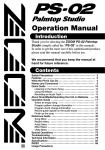
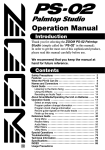


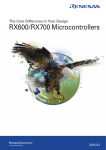
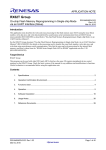
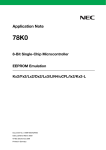
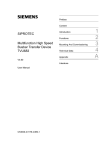

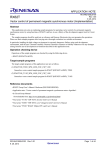

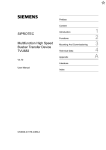

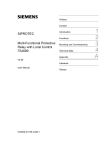
![[U4.63.14] Opérateur PROJ_SPEC_BASE](http://vs1.manualzilla.com/store/data/006351657_1-126169345fb4e0059be6c9c6c94e06af-150x150.png)